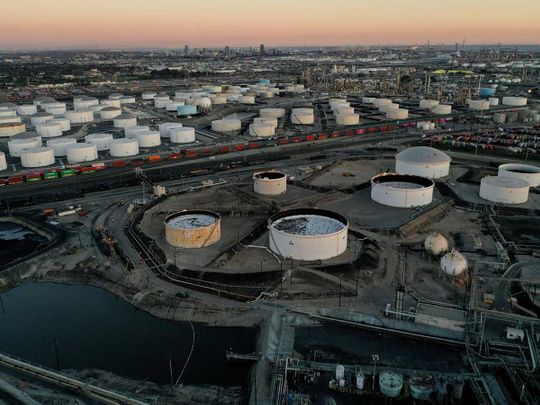
Oil headed for a weekly loss as signs of a global economic slowdown and tighter monetary policy threaten to sap energy consumption.
West Texas Intermediate futures traded near $89 a barrel, taking this week's decline to almost 4%. Red-hot US inflation data released on Thursday spurred expectations that the US Federal Reserve will again hike interest rates substantially at its two remaining meetings of 2022, slowing growth.
Crude has also struggled as demand in China, the largest importer, remains subdued as the government presses on with its Covid-Zero policy.
Cases have persisted this week, including in Shanghai, in the run-up to the country's critical twice-a-decade Communist Party Congress, which opens this weekend.
Oil rebounded last week from lows in September after the Organization of Petroleum Exporting Countries and its allies including Russia (OPEC +) agreed to cut production, but that advance has been partially unwound since Monday. The International Energy Agency (IEA) warned the group's supply cut risked causing prices to spike, potentially tipping the global economy into recession.
The decision by OPEC+ to reduce output enraged the Biden administration.
President Joe Biden — who ordered releases from the Strategic Petroleum Reserve earlier this year — said he'd announce new actions next week to combat high US gasoline prices.
"In the short term, the macro picture and potential US action — further SPR releases — to try and counter OPEC+ supply cuts could put some further downward pressure on prices," said Warren Patterson, head of commodities strategy at ING Groep NV. "However, in the medium to long term, the market is looking increasingly tight which suggests that prices should move higher."
As the Fed hikes rates, a stronger US dollar has been a headwind for crude as it makes commodities priced in the currency more expensive for overseas investors. The Bloomberg Dollar Spot Index headed for a weekly gain, trading near a record hit last month.
Widely watched time spreads have declined in recent weeks, suggesting an easing of near-term market tightness. Brent's prompt spread — the difference between the two nearest contracts — was at $1.71 a barrel compared with $2.03 last Friday and $2.82 two weeks ago.












